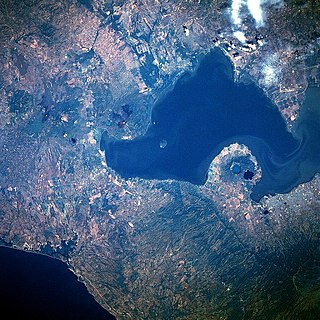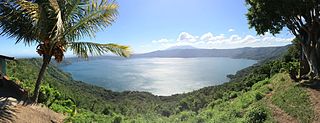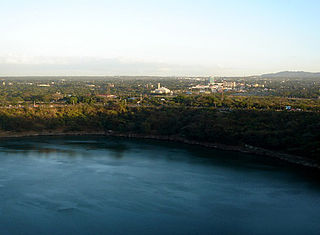| Chiltepe Peninsula Natural Reserve | |
|---|---|
| Reserva Natural Península de Chiltepe | |
| Coordinates | 12°15′00″N86°21′00″W / 12.25000°N 86.35000°W Coordinates: 12°15′00″N86°21′00″W / 12.25000°N 86.35000°W |
Chiltepe Peninsula Natural Reserve (Spanish: Reserva Natural Península de Chiltepe) is a nature reserve in Nicaragua. It is one of the 78 reserves which are officially under protection in the country.

Spanish or Castilian is a Western Romance language that originated in the Castile region of Spain and today has hundreds of millions of native speakers in the Americas and Spain. It is a global language and the world's second-most spoken native language, after Mandarin Chinese.

A nature reserve is a protected area of importance for flora, fauna or features of geological or other special interest, which is reserved and managed for conservation and to provide special opportunities for study or research. Nature reserves may be designated by government institutions in some countries, or by private landowners, such as charities and research institutions, regardless of nationality. Nature reserves fall into different IUCN categories depending on the level of protection afforded by local laws. Normally it is more strictly protected than a nature park.

Nicaragua, officially the Republic of Nicaragua, is the largest country in the Central American isthmus, bordered by Honduras to the northwest, the Caribbean to the east, Costa Rica to the south, and the Pacific Ocean to the southwest. Managua is the country's capital and largest city and is also the third-largest city in Central America, behind Tegucigalpa and Guatemala City. The multi-ethnic population of six million includes people of indigenous, European, African, and Asian heritage. The main language is Spanish. Indigenous tribes on the Mosquito Coast speak their own languages and English.
Located on the South shore of Lake Managua, it is 15 kilometers Northwest of Managua, the capital, and consequently a popular destination for visitors from the city.

Lake Managua is a lake in Nicaragua. The Spanish name is Lago de Managua or Lago Xolotlán. At 1,042 km², it is approximately 65 kilometres (40 mi) long and 25 kilometres (16 mi) wide. Similarly to the name of Lake Nicaragua, its name was coined by the Spanish conquerors from "Mangue" and agua ("water"). The city of Managua, the capital of Nicaragua, lies on its southwestern shore.

Managua is the capital and largest city of Nicaragua, and the center of an eponymous department. Located on the southwestern shore of Lake Managua, it had an estimated population 1,042,641 in 2016 within the city's administrative limits and a population of 1,401,687 in the metropolitan area, which additionally includes the municipalities of Ciudad Sandino, El Crucero, Nindirí, Ticuantepe and Tipitapa.
The peninsula was formed by Apoyeque stratovolcano, [1] one of whose domes is Chiltepe volcano (Volcán Chiltepe). [2]
Local fauna includes coyotes, deer, raccoons, rabbits and other small mammals, as well as iguanas and lizards, which have been disappearing under pressure from hunting. At its coasts live ducks, herons, cormorants, and such birds as sargentillos (Agelaius), cowbirds (Molothrus Tangavius), Clariona (Cassidix mexicanus), and zanatillo (Cassidis nicaraguensis). The latter species is endemic to the coasts of lakes in Nicaragua.
Among the threats affecting the conservation of the protected area are frequent forest fires and expansion of agricultural areas at the expense of the nature reserve. [3]














